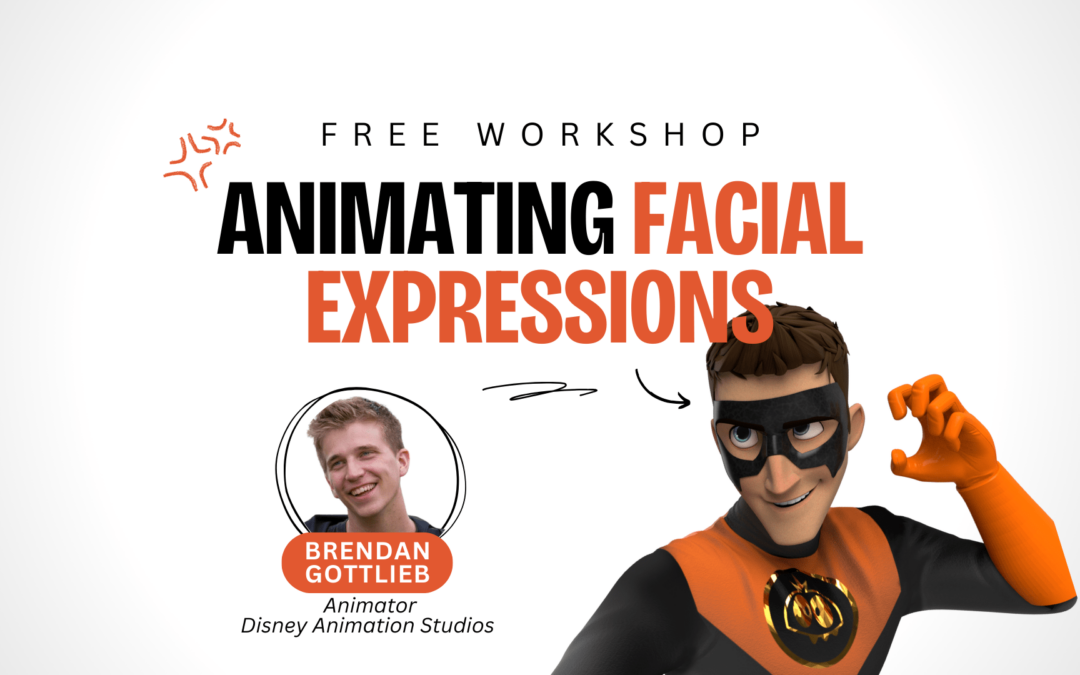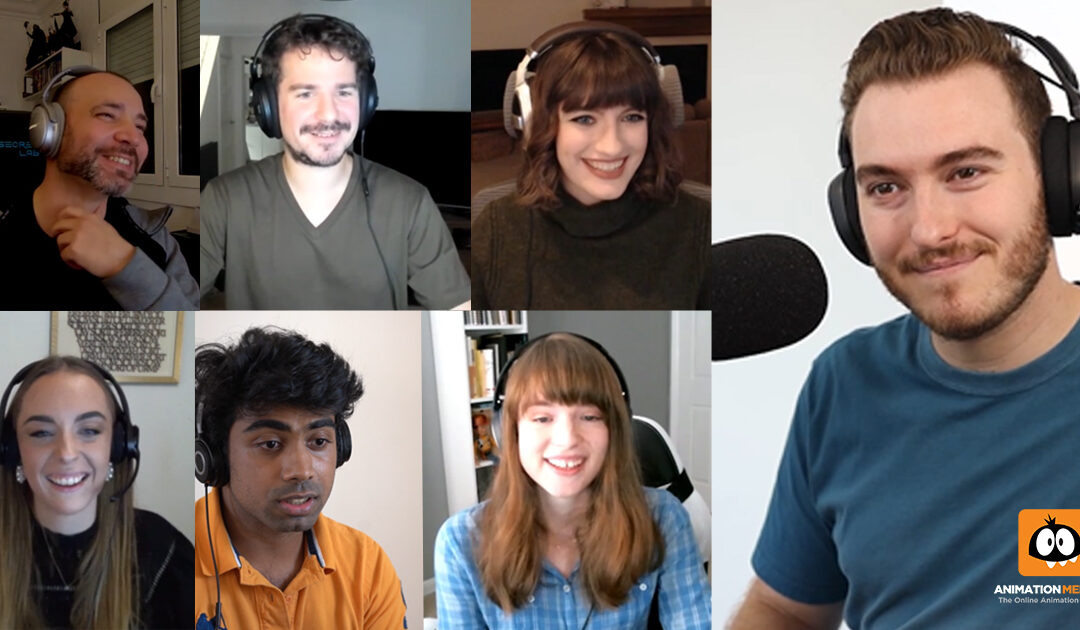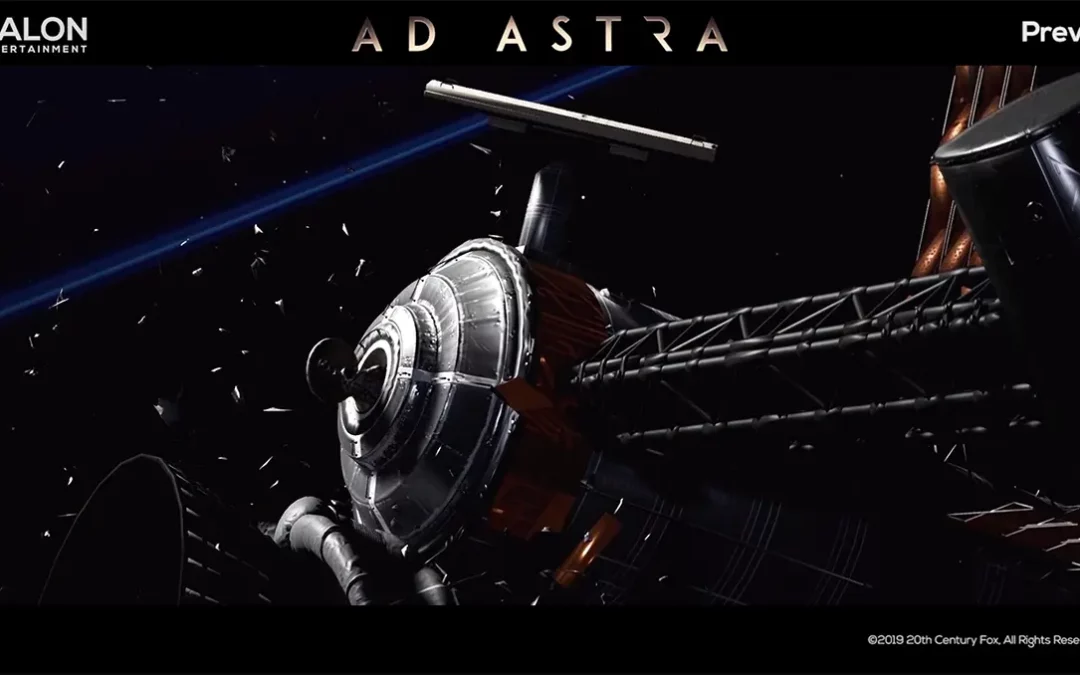Sully in Monsters, Inc. via Giphy
“Urrghh!! You make me so mad! I am going to break your neck!”
Did I get your attention? When you read that line, did you read it in an angry voice? Most likely your answer is yes. Anger grabs attention. When people fight or argue, we look. It triggers our survival instinct. Anger is also an emotion we can easily relate to. If an animator gets to do an anger scene, he is getting the viewers’ full attention. The animator should seize such an opportunity and offer an emotionally charged performance that the audience is hungry for.
From Pixar’s Inside Out via GIPHY
A Range of Anger
A lot of beginners animate an angry scene just for the sake of anger, e.g. a villain doing an angry speech. It usually ends up looking cliché because the performance is generic and the audience has seen that tyrant speech many times. The audience understands the cliché performance but is not engaged.
The opposite of cliché is specific. Anger can range from annoyance to a slow burn to an all-out explosion of aggression.
The opposite of cliché is specific. Anger can range from annoyance to a slow burn to an all-out explosion of aggression. If the animator makes the angry emotion specific and grounds the anger to the content of the scene and the context of the specific character, the performance should have a sense of sincerity that captivates the audience.
Here is a shot I animated for Treasure Planet (Disney), where young Jim Hawkins is annoyed by being called “an infant”. Though Jim hates to be treated like a kid, he is far from reaching the “fist shaking” level of anger. He expresses his frustration by simply shooting a quick glance of annoyance.
This is a wonderful clip from The Incredibles 2 (Disney/Pixar) animated by Kevin O’Hara. Mr. Incredible finally explodes from the built-up irritation of juggling never-ending housework. This is a great example of a high-energy anger scene packed with aggressive gestures like pointing, grabbing, and arm swinging:

Examples of aggressive gestures from Manwatching by Desmond Morris
Escalation and Variety in Acting Shots
Another common beginner problem with an angry scene is the lack of escalation, variety, and contrast.
Anger is a high energy state and usually comes with consequences. Humans are tactful. A frustrated person usually tries different tactics before going into a rage. They may negotiate, debate, or even compromise before kicking into fight mode. This progression of tactics provides a good chance for buildup and variety, especially when planning a pantomime scene.
Escalation doesn’t just intensify the final outburst, it also makes the anger more believable because the audience can feel the emotional progression. Sometimes a scene contains the trigger for the anger, which is a perfect starting point of escalation.
This clip from There Will Be Blood (Ghoulardi Film Company) is a great example of anger escalation, as Daniel Day Lewis is forced to confront his painful experience of abandoning his son. When Daniel’s button is pushed, he is loaded with rage but is trying to contain it (notice he is literally biting his lower lip). He resets his tone to a mutter, which gives room for the quick escalation to the painful scream at the end:

Examples of Escalation in There Will Be Blood.
Emotional Contrast in Animation
The first ideas of angry gestures are usually the aggressive ones, like finger pointing and fist shaking, however, the contrasting options should also be explored. For example, if a villain expresses his anger in a charming fashion, that can be an appealing solution to an otherwise typical anger scene. Contrast brings texture to the performance, and sometimes can also bring a pleasant surprise to the audience.
This is an example from Ratatouille (Disney/Pixar). The moment of Colette’s sweetness is not inherited from the storyboard but is created by animator Tom Gately. The contrast of Colette’s sweetness and her harshness really brings out the humor of the scene:
The Intense Expression
In addition to body gestures, the other obvious tool to show anger is in facial expressions, especially the eyes. Raised lower lids, compression of brows, and a downward head tilt can give the eyes a menacing look.
Here is another look at the expressions from the Daniel Day Lewis clip. Notice the crease between the brows, the tension on his neck, and even the vein on his forehead. When he says, “I abandoned my boy,” his brows have a subtle frown which is triggered by his painful past. The frown offers an insight into the character and also creates a variation in his angry expressions:

Daniel Day Lewis’ expressions in There Will Be Blood

Here is a scene from The Assassination of Jesse James by the Coward Robert Ford (Plan B Entertainment), where Casey Affleck has interesting and subtle half blinks when he is irritated by Brad Pitt’s rejection:
A mirror is one of the best tools for animating facial expressions. As seen in this picture, Disney legend animator Norm Ferguson is using the mirror to study an angry look:

Disney animator Norm Ferguson practicing facial expressions
When studying the eyes, pay special attention to the lids and brow shapes. The upper lids usually follow the brows pattern. The inner, middle, and outer parts of a brow have their own range of movements. The combination of those 3 parts forms the variety of brow expressions.
Quick Tip: Anger is a high emotional state. When acting out the scene, load yourself with energy, e.g. pace back and forth to build up the emotion.
Here is an example from The Incredibles animated by Bolhem Bouchiba. Notice the range of facial performance achieved by variations on a key angry expression:
Putting Anger Into Context
The actions of anger can be staring, crossing arms, pointing, screaming, stomping, etc. The animator’s choice of action depends on the content of scene and the personality of the character:
To illustrate these points, here is a study of a clip from Wet Hot American Summer by Eureka Pictures:
Andy (played by Paul Rudd) is frustrated because he is forced to clean up his mess by camp director Beth (played by Janeane Garofalo). Frustration is the main emotion and there is a power struggle in the scene.
The scene’s business is cleaning and Andy’s goal is to drag out the cleaning as a protest. This scene is important because it is the first sequence to reveal how Andy drags about responsibility. Andy is a spoiled cry baby who always gets when he wants. However, Beth has a higher status, so he compromises. This is one of the only two scenes in the film that Andy doesn’t get what he wants.
Though subtle, Andy’s anger escalates from frustration to resentment to confrontation. Each moment of eye contact between Andy and Beth further escalates Andy’s anger.
Phew!
So, when animating an angry scene, first figure out who the character is and ground the anger in the context of the scene. Then look for an opportunity for escalation, locate the trigger moment if it is in the scene, explore the contrast option, provide variety to gain insight into the character and keep the audience engaged. As we see in the clips above, a touch of humor can be helpful, too! And finally, remember to show the scene to your trusted colleagues for feedback.
When animating an angry scene, first figure out who the character is and ground the anger in the context of the scene.
Hope this helps! Students are welcome to send comments to my AM email. Good luck with your angry animation. Urgh!
Want to be mentored by professional animators?
Start your animation journey today by learning from animators at studios like Blue Sky, Pixar, and Sony Imageworks! Get more information about Animation Mentor’s Character Animation Program.



